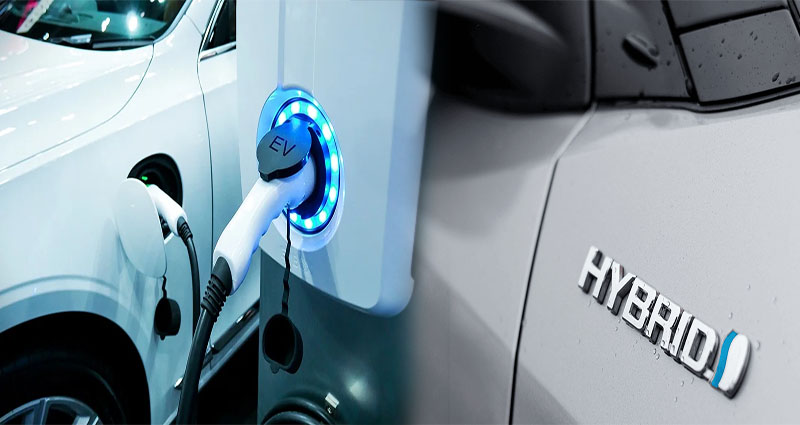Exploring Extended Range Electric Vehicles (EREVs)
Extended Range Electric Vehicles (EREVs) have emerged as a compelling solution for individuals looking to reduce their carbon footprint without sacrificing the convenience and flexibility of traditional vehicles. By combining the benefits of electric and petrol power, EREVs offer an extended driving range and reduced emissions. Let’s take a closer look at this innovative technology and explore its advantages and limitations.
What Are Extended Range Electric Vehicles (EREVs)?
EREVs are vehicles that incorporate both an electric motor and an internal combustion engine, similar to plug-in hybrid electric vehicles (PHEVs). However, what sets EREVs apart is that their primary source of propulsion is the electric motor. The internal combustion engine operates solely to generate electricity, which charges the battery and provides additional power when necessary.
The Benefits of Extended Range Electric Vehicles (EREVs)
- Reduced Emissions: One of the key advantages of EREVs is their significantly reduced emissions compared to traditional petrol
Exploring Hybrid Electric Vehicles (HEVs)
Hybrid Electric Vehicles (HEVs) have gained widespread popularity in recent years as a viable alternative to traditional petrol or diesel-powered vehicles. These vehicles combine both an internal combustion engine and an electric motor to provide improved fuel efficiency and reduced emissions. Let’s delve deeper into the world of HEVs and explore their benefits and drawbacks.
What Are Hybrid Electric Vehicles (HEVs)?
HEVs are vehicles that utilize a combination of an internal combustion engine (typically petrol or diesel) and an electric motor. These two power sources work together to provide propulsion to the vehicle. The electric motor is powered by a battery pack that is charged either through regenerative braking or by the combustion engine itself.
The Benefits of Hybrid Electric Vehicles (HEVs)
- Fuel Efficiency: One of the primary benefits of HEVs is their improved fuel efficiency. The electric motor assists the combustion engine, reducing the workload and overall fuel consumption.
Exploring Plug-in Hybrid Electric Vehicles (PHEVs)
There has been a significant shift towards electrification in the automotive industry, with more and more manufacturers offering hybrid and electric vehicles. Plug-in Hybrid Electric Vehicles (PHEVs) are a popular option for many consumers who want to reduce their carbon emissions but still need the convenience of a traditional petrol vehicle.
What Are Plug-in Hybrid Electric Vehicles (PHEVs)?
PHEVs are hybrid vehicles that can be charged by plugging them into an electric power source. They have both an electric motor and a petrol or diesel engine, which work together to power the vehicle. PHEVs can either be charged from a standard power outlet or from a public charging station. They also have regenerative braking, which helps to recharge the battery while driving.
The Benefits of Plug-in Hybrid Electric Vehicles (PHEVs)
- Reduced Emissions – PHEVs emit less carbon compared to traditional petrol vehicles, making them a more environmentally friendly choice.
- Fuel
Exploring Battery Electric Vehicles (BEVs)
Battery electric vehicles (BEVs) have emerged as a promising solution for sustainable transportation, offering lower emissions and reduced reliance on fossil fuels. As technology advances and the demand for clean energy grows, BEVs are becoming increasingly popular among consumers worldwide. In this article, we will explore the concept of battery electric vehicles and delve into their benefits, challenges, and future prospects.
What are Battery Electric Vehicles?
Battery electric vehicles, often referred to as BEVs, are a type of electric vehicle that runs solely on electric power. Unlike hybrid vehicles, which combine an internal combustion engine with an electric motor, BEVs are entirely powered by rechargeable batteries. These vehicles store electricity in their battery packs and use it to power an electric motor, propelling them forward.
Benefits of Battery Electric Vehicles
- Environmental Sustainability: One of the most significant benefits of BEVs is their positive impact on the environment. They produce
Predictions for Growth and Market Disruption of the Future of Electric Vehicles
The future of electric vehicles (EVs) holds immense potential for growth and market disruption in the automotive industry. As technology continues to advance and environmental concerns drive the shift toward sustainable transportation, several predictions can be made about the trajectory of EV growth and its impact on the market. In this article, we will explore these predictions and the potential market disruptions that lie ahead.
Prediction 1: Exponential Growth in Electric Vehicle Sales
The first and most prominent prediction is the exponential growth in electric vehicle sales. As governments worldwide implement stricter emission regulations, offer incentives, and invest in charging infrastructure, consumer demand for electric vehicles will soar. According to BloombergNEF, it is projected that by 2040, EVs will make up 58% of global passenger car sales.
Prediction 2: Decline of Internal Combustion Engines
As electric vehicles gain popularity and market share, the demand for internal combustion engines (ICEs) will … READ MORE ...








